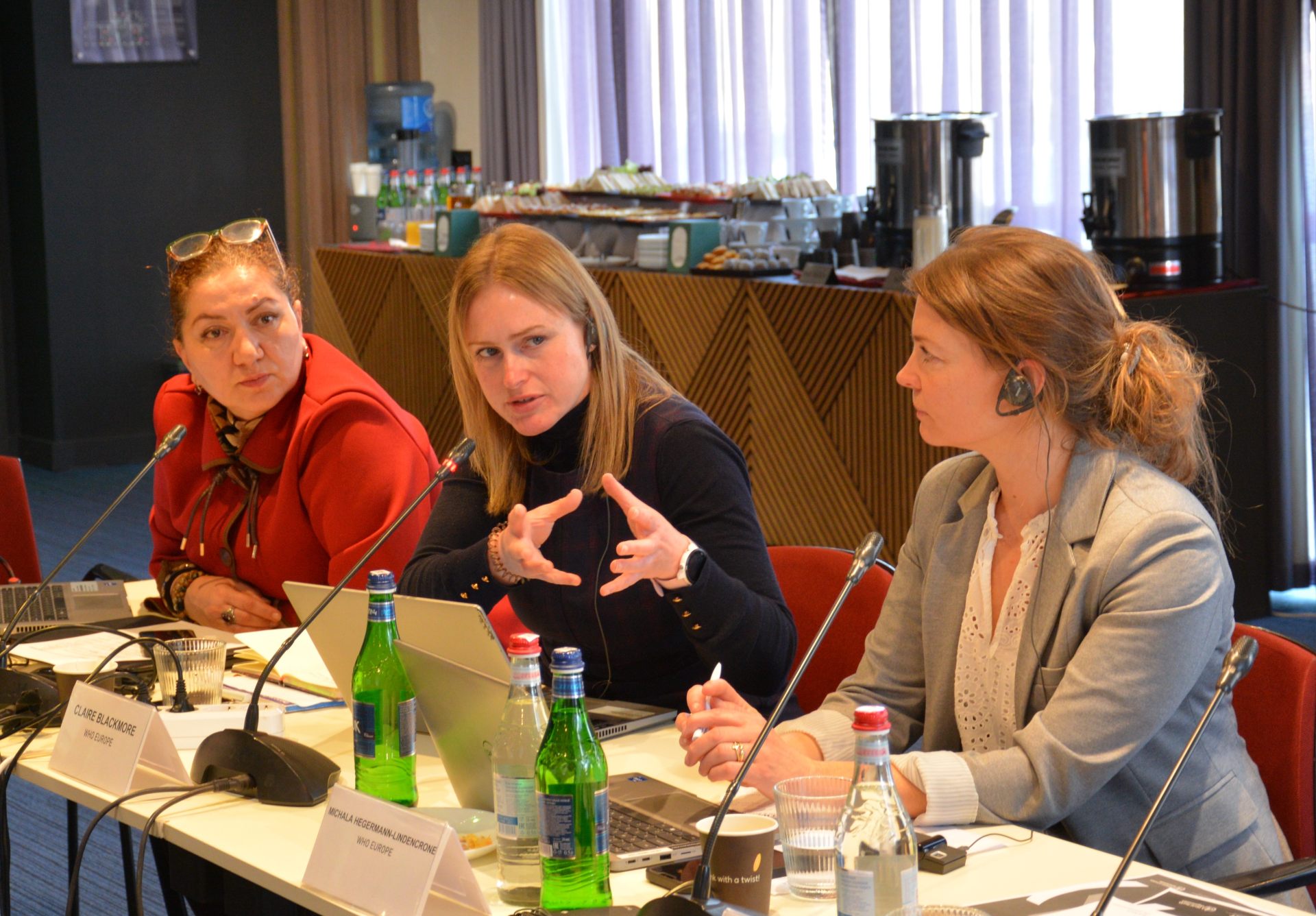Respiratory disease is caused by microbes such as viruses, bacteria or fungi that infect the lungs and other parts of the respiratory system. Many of these spread easily from person to person. While we have some immunity to many microbes, if a new strain appears, people are often defenceless, which can lead to rapid global spread – a pandemic. Having a good understanding of these pathogens and plans in place to respond to them is essential if countries are to mitigate the risk and impact of any future respiratory pandemic. After all, the COVID-19 pandemic taught us that a new, unknown threat could be just around the corner, with devastating consequences if not handled well.
“The lessons learned from past pandemics can help us prepare for future health crises,” explains Dr Marc-Alain Widdowson, who leads the High Threat Pathogens team at the WHO Regional Office for Europe (WHO/Europe). “To capture and share these lessons, WHO established the global Preparedness and Resilience for Emerging Threats (PRET) initiative, with the aim of strengthening preparedness and readiness for pandemics and other disease outbreaks.”
To better prepare the world for future health emergencies, 4 guiding principles shaping all PRET activities were established:
- countries need specific capacities and systems to be operationally ready to respond to infectious disease threats;
- global approaches to pandemic preparedness must be tailored to address regional and country-level specificities;
- global events such as pandemics require global coordination, intercountry collaboration and solidarity; and
- a multisectoral approach is needed.
Recognizing commonalities and the importance of collaboration
The PRET initiative recognizes that the same systems, capacities, knowledge and tools can be used and applied for groups of pathogens depending on their mode of transmission, such as respiratory, vector-borne or foodborne.
“PRET incorporates the latest tools and approaches for shared learning and collective action established during the COVID-19 pandemic and other recent public health emergencies,” explains Dr Widdowson. “It places the principles of equity, inclusivity and coherence at the forefront and provides a platform for national, regional and global stakeholders to collaborate to strengthen preparedness and to be ready to act quickly and decisively in crisis situations.”
PRET activities in the WHO European Region
The first PRET Module, launched in April 2023, focuses on preparing for pandemics caused by respiratory pathogens, given that they are typically easily transmissible and pose a significant public health threat. The launch of PRET has been followed by a global rollout of activities across all WHO regions.
In the WHO European Region, the PRET initiative has been introduced to Member States through a series of subregional meetings and national workshops, so far reaching a total of 48 countries and territories. The purpose of these events has been to introduce the PRET initiative, reflect on lessons from the COVID-19 pandemic and other public health emergencies and to examine multisectoral interdependencies and cross-country collaboration related to pandemic preparedness. The ultimate goal is to then encourage countries to re-examine and revise their national pandemic plans to strengthen their preparedness.
At national level, the development of these revised plans has included clarifying the roles and responsibilities of stakeholders; clearly outlining coordination mechanisms; involving community leaders in the dissemination of key messages; strengthening deployment mechanisms for pandemic vaccines; implementing electronic surveillance systems; and mapping the capacities of health facilities.
Michala Hegermann-Lindencrone, Technical Officer for WHO/Europe’s Infectious Hazards Management Programme, comments: “Experts across the WHO European Region are dedicated to developing the next generation of pandemic plans based on the challenges and opportunities identified during the COVID-19 pandemic. WHO/Europe stands with Member States throughout this process.”

Testing plan effectiveness
Testing pandemic plans is a pivotal part of thorough pandemic preparedness, ensuring that those involved are aware of the processes and steps required to enact it, including their roles and responsibilities in both pandemic planning and response.
“Including simulation exercises (SimEx) in the development of pandemic plans can help to easily identify gaps and failings before it’s too late,” says Hegermann-Lindencrone. “This facilitates the development and updating of plans, identifies areas for training and capacity building, consolidates multisectoral partnerships and ensures preparedness at all levels, from national to subnational, to protect the Region as a whole.”
Dr Pranvera Kaçaniku Gunga, epidemiologist and Head of the Communicable Disease Surveillance Unit at the National Institute of Public Health in Kosovo*, involved in one of the SimEx organized as part of a national PRET workshop, notes: “Conducting SimEx for the first time was a challenge, but testing our Action Plan for Preparedness, Prevention, Response and Resilience for respiratory pathogen pandemics enabled us to improve the key components of the document.”
Pandemic planning for global health security
Updating and testing of pandemic preparedness plans is assessed as part of the Pandemic Influenza Preparedness (PIP) Framework’s Partnership Contribution High-Level Implementation Plan. The PIP Framework is a unique agreement between WHO, Member States, industry and other stakeholders that seeks to strengthen pandemic preparedness by improving influenza virus surveillance and sharing, while ensuring equitable access to pandemic vaccines and other products during a future influenza pandemic.
Every year, through the PIP Framework access and benefit-sharing mechanism, WHO receives a partnership contribution to strengthen pandemic preparedness – for example, in the areas of collaborative surveillance, pandemic planning, regulatory capacity building and community protection. It is under this umbrella that the PRET initiative is rolled out across the WHO European Region.
* All references to Kosovo should be understood to be in the context of the United Nations Security Council resolution 1244 (1999).




